Recently released, ‘Companion’ is a sci-fi/horror/romance centred around our inhuman protagonist Iris. Directed by Drew Hancock and produced by Zach Cregger, ‘Companion’ tells an unfolding story of objectification, technology and relationship dynamics. Most importantly, Iris’ wardrobe is to die for (wink wink). To create her look there was close collaboration between the art departments, with thanks to costume designer Vanessa Porter, make-up artist Sasha Grossman and hair stylist Joshua First.
Overall I really enjoyed ‘Companion’, although it was predictable in parts, it was an easy-watch with entertaining characters, captivating performances (Sophie Thatcher and Lukas Gage appreciation) and interesting commentary on power dynamics. Personally I don’t tend to watch trailers in order to avoid any possible spoilers; I prefer to go into a film blind, so I still can’t really understand the choice to reveal Iris’ robotic state before the release. Maybe the marketing teams assumed there wouldn’t be enough traction if they didn’t showcase that information pre-release? During the film they build up to it as if we aren’t supposed to know, so the grand-reveal falls a little flat, because hello, you already told us this?
Pessimism aside, I liked the film, and I REALLY liked Iris’ costume design…
Companion Costume Design
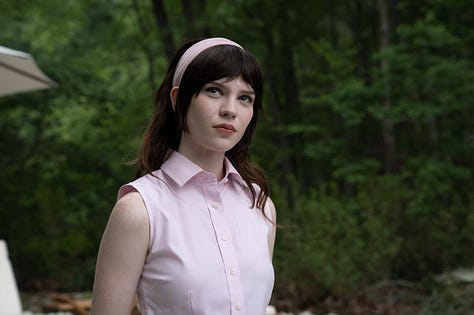
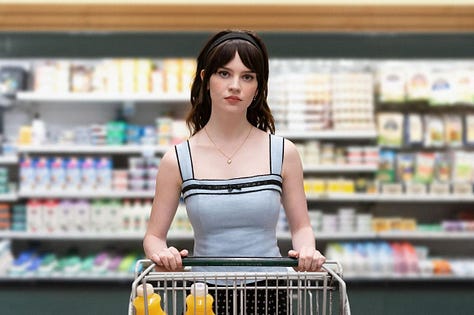
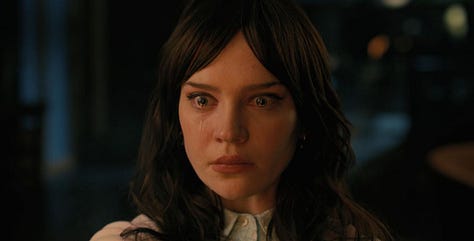
In preparation for Iris’ design, Porter and Hancock had established that Iris’ robotic model be representative of the ‘girl-next-door’ archetype. She is the ‘perfect’ girlfriend: subservient, doting and doll like. Almost nothing about her appearance was actually written into the screenplay, the only description being “she had impossibly perfect skin”. Porter disclosed that they briefly considered a 2000s Britney Spears inspired look, but realised that it didn’t feel right for the character. They then pivoted towards the 50s/60s New Wave French girl aesthetic, taking inspiration from retro films and mid-century icons.
The wardrobe colour palette was taken from the 1964 film ‘The Umbrellas of Cherbourg’ and clothing details from 1954’s ‘Sabrina’ starring Audrey Hepburn. As seen on Porter’s vision boards for Iris, Hepburn is a frequent feature. Visuals include her summer vacation style, with use of gingham, ballet flats and cropped trousers. We can also see that Brigitte Bardot’s signature headband was used as a visual motif; a low-maintenance accessory that subtly amplified the French girl chic.
As we look more closely at Iris’ looks, it’s important to consider that Iris is dictated by the male gaze and she doesn’t actually have a personal style. Her wardrobe speaks more about Josh (her boyfriend) than it does her, as he is the one who chose it.

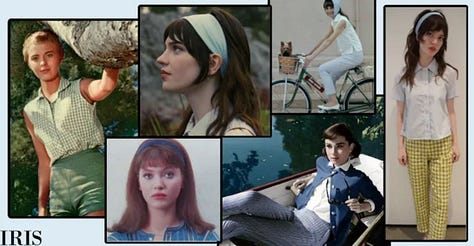
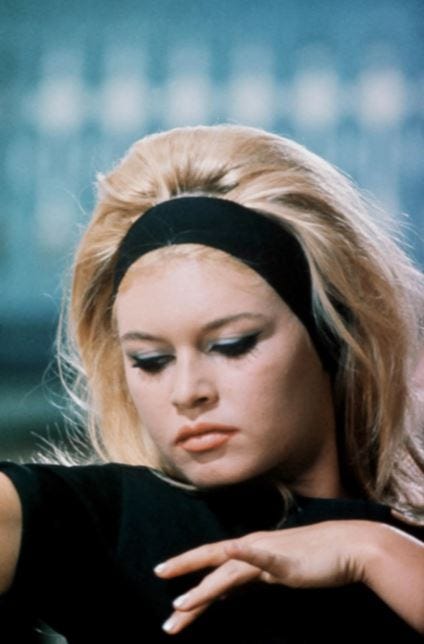
To achieve the wardrobe, Porter shopped at French aesthetic and ‘trad wife’ brands such as Ciao Lucia and Brooks Brothers. Everything about Iris is always perfectly put together; her matte makeup never smudges, as if it is stamped on to her face like a Barbie doll, and her clothes get dirty but never become untucked or scruffy. All of the mess is seemingly placed on top of her silhouette, never altering her blueprint structure.
Iris dresses modestly in buttoned up shirts and traditional A-line dresses, with retro beaded decoration and embroidery on her evening dress. Her looks are uniformly co-ordinated, e.g. the headband among her coiffed hair matches her shirt and her boxy shorts match her shoes.
Interestingly, Porter remarks how the female characters Iris and Kat, although opposing personalities, are two sides of the same coin. The coin being symbolic of the power struggle between partners and the problematic dynamics on screen. Iris and Kat’s costumes were designed to have the same silhouette, this portrays their subtle similarities beyond immediate visual differences.
6os Fashion
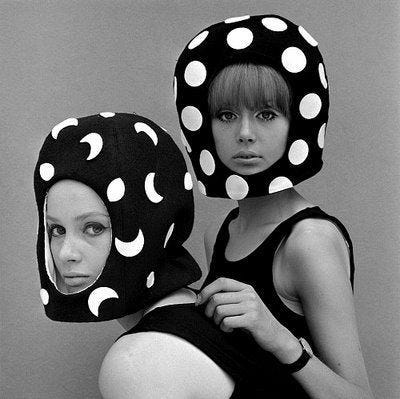

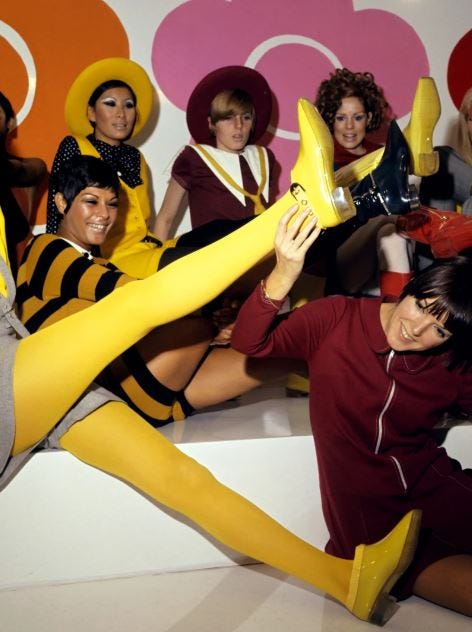
The fashion era of the 60s is closely connected to some of the pioneering contemporary cultural occurrences, including the fashion led ‘youthquake’ and the effects of the Cold War Space Race. Key pieces of the decade include psychedelic prints, shift dresses and colourful hosiery, as the overall dress codes became relaxed and enforced a new mood of informality.
The V&A museum categorises the decade into three main trends: refined ladylike elegance; fun, youthful designs and Eastern influences that fuelled hippie styles. Additionally, the cosmetics industry boomed, with a spotlighted focus on the eyes. The term ‘youthquake’ was coined by the Vogue writer Diana Vreeland, representative of the youth’s kickback against tradition and confinement. Finally being able to dress differently to their parents and adopt their own personal style, the younger generation used their disposable income to actively change the course of fashion among youth culture forever.
At the beginning of the decade, existing trends rolled over from the 50s: sophisticated and refined styles influenced by Audrey Hepburn and Jacqueline Kennedy. Dressed in pastel skirt-suits, luxurious coats and matching pillbox hats, the pairs’ polished looks were produced by likes of Hubert de Givenchy and Cristobel Balenciaga.
During the Cold War, the USA and Soviet Union’s Space Race hugely impacted fashionable aesthetics, leading the inspiration of André Courrèges SS64 show. Highlighting the use of futuristic fabrics and space age chics, go-go boots and silver shift dresses became a popularised stylistic choice, influencing the 1968 film “Barbarella” starring Jane Fonda. The use of man made materials was substantial during this period, with the fashion industry exploiting the potential of modern plastics and synthetic fibres. These were exhibited in Courrèges’ futuristic designs: astronaut hats, goggles and catsuits.

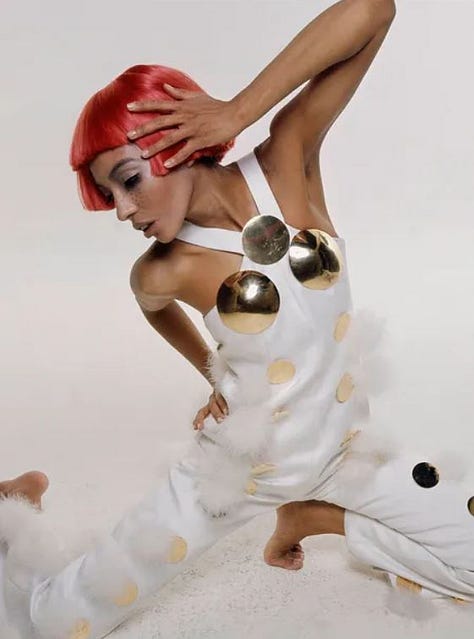
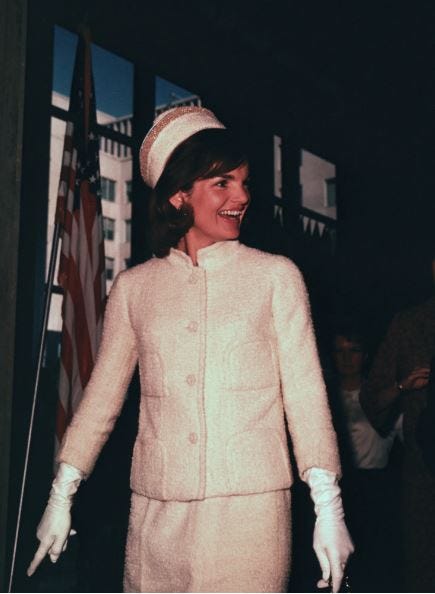
Modern designs dominated the mid-60s as fashion embraced a freeing and playful look. Popular silhouettes were sheath and A-line mini dresses without restrictive or defined waists. One of the most iconic designers of the decade was Mary Quant, who sadly passed away only a couple of years ago. Her most popular design was of course the revelation of the mini skirt, which was heavily showcased on the iconic model Twiggy (Lesley Lawson)). Twiggy and Penelope Tree were early examples of popularised ‘it’ girls being used as marketing tools for clothing companies. Quant’s simple and colourful designs appealed to teenagers by creating mix n match options. Fashion historian and writer, James Leaver, describes Quant’s taste as “perfectly suited to the mood of the 60s”, as she rejected the constraints of seasonal shows, producing as many as 28 collections during her early years with elements of classlessness (Leaver, p261-2).
Between ‘65 and ‘67, futuristic designs were then superseded by the returning styles of Art Nouveau. Suede headbands, afghan coats and flowing skirts were all the rage, subsequently rolling into the rock-n-roll glamour of the late 60s. Inspired by the styles of musician’s girlfriends, shaggy fur coats, mini skirts, thigh high boots and feather boas became the coveted look.




